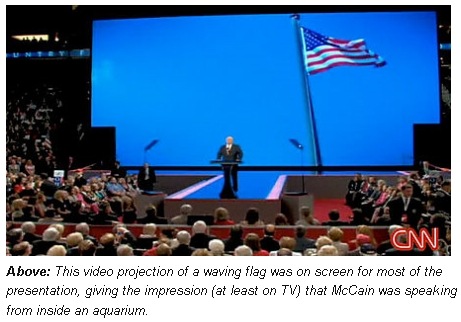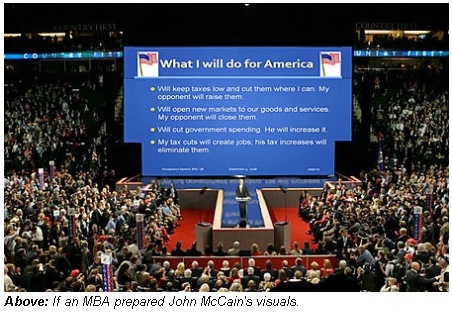Home » teaching and learning (Page 4)
Category Archives: teaching and learning
Building Open Education Resources from the Botton Up
Hello to everyone at the Open Education Resources Free Seminar today in Brisbane. I’m sorry I couldn’t be there in person today, but for those who were there – and anyone else interested – my short presentation ‘Building Open Education Resources From the Bottom Up: How Student-Created Open Educational Resources Can Challenge Institutional Indifference‘ is embedded here:
My apologies for the few glaring typos in the slides – it’s a good argument against recording a presentation at 1am in the morning! Any comments, questions or thoughts either from folks at the seminar, or from anyone else, are most welcome!
Update: If you’re just after the powerpoint slides, you can now view or download them on Slideshare.
Spore, or: The Battleworm 4000 (and kids…)
So, there has been a lot of talk about Spore since it’s initial release almost a fortnight ago and since I’m in the middle of a series of lectures for our new gaming based unit in Communication Studies, I figured I should definitely try it out. I’m still thinking all of the logistics through, but one thing is clear from the outset: while Spore does have a win-condition (unlike The Sims which is basically endless), it’s not a game, it’s a toy. Or, rather, it’s not overly satisfying as a game (the gameplay is, to be frank, not all that exciting), but as a toy to build cellular organisms, new species and even space-faring civilisations, it’s absolutely brilliant. Also, even with the weirdest creatures, Spore makes everything cute. To justify that point, I’d like to introduce one of my species, the Battleworm 4000:
And make sure you watch the video all the way through to meet the kids! More on Spore, I’m sure, in the coming weeks …
Presidential Presentation Zen
Those who’ve heard my thoughts on presentations in general (most are bad … including most of mine), you’ll also know I think Garr Reynolds’ Presentation Zen (the blog and the book) is the most insightful guide to contemporary presentation design currently available. Thus, I was fascinated by Garr’s take on the differences between Barack Obama and John McCain’s national convention speeches and the graphic elements which accompanied them. The short version: Obama presents like a deity, while McCain bombed in visual terms. In terms of teaching presentation, though, Garr did mock-ups of how McCain’s talk would have looked in different styles which really get you thinking. Here’s the difference between an MBA and Steve Jobs presenting so you can see what I mean (and why this would be useful when trying to get others to think through presentation in visual terms):
Student Digital Media Project Showcase
After getting off to a decent start with my blogging about student creativity this year, I seem to have fallen a little behind. I’ve had this post in draft form for ages, waiting for some insightful commentary to spring forth from my uncooperative brain, but alas, none has emerged so I thought I’d just showcase a few outstanding examples from my Digital Media (Comm2203) unit last semester and let them speak for themselves! While the first Student News assignment in this unit asked students to make a relatively traditional television news-style story (the best of which were screened on local tv), the final project was rather different as it was designed to provoke some hard thinking about digital media more broadly both in form and content. The outline for the final projects stated:
The Digital Media Project is designed to explore the affordances of digital video and media in an online context. Working in teams (the same as your Student News Project team), students will produce a 3-minute short digital video piece which critically explores an idea, concept or area which was discussed in or, or directly provoked by, the ‘Convergence & Transmedia Storytelling’ or ‘Citizen Journalism and Participatory Culture’ lectures, readings and seminars.
This project emphasizes (a) research in the area of digital media, (b) clarity in communicating and sharing a research-informed perspective or argument about part of the digital media landscape; (c) taking an innovative approach to creating digital media; and (d) technical proficiency in creating digital media.
Given that the first half of the unit was largely practical – many were first-time users of digital video cameras, sound equipment and non-linear editing software – I wondered if introducing conceptual material from the likes of Henry Jenkins and Axel Bruns might overwhelm students; on the contrary, I found almost everyone excelled at combining their newfound practical skills with wider issues and concepts. All 28 projects submitted were of a high quality, and everyone who took this unit should be proud of their work, but a few really did stand out amongst the rest and are well worth highlighting here.
The first project I want to mention is ‘Citizen Journ vs Traditional Journ‘ which mimics the style of the Mac Vs PC advertisements, with a stop-motion twist, to explore the changing relationship between traditional journalists and citizen journalists:
In a similar vein but using a really different technique, ‘Something Old, Something New‘ mixes excerpts from a 1940s documentary on being a journalist with contemporary footage to examine exactly how far journalism has changed in the face of participatory culture:
Looking at web 2.0 culture more broadly, ‘A Blog’s Life’ is a comical look at the evolution of blogging, in the style of a nature documentary:
And in a slightly more academic tone, ‘Transmedia Storytelling and Convergence’ gives a pretty good rundown of some core features of Henry Jenkins’ arguments about transmedia in the digital media landscape:
Finally, ‘Joe Bloggs Presents Web 2.0’ is a laugh out loud satire looking at the average blogger (A LANGUAGE WARNING, though: Joe Bloggs swears like an angry trooper!):
And, yes, I did have what can best be described as an awkward cameo appearance in that the adventures of Web 2.0 there – but it was worth if, if nothing else, for that outstanding end credits song! If you’re inspired to see more, 27 of the digital media projects can be found here. Also, it’s worth mentioning that the majority of students chose to post their work under a Creative Commons license (not all, I should add, but I’m pleased enough that by the end of the course everyone knew enough to make an informed choice one way or another).
Oh and quick shout out: my partner in crime in teaching Digital Media was Christina Chau who was an excellent tutor and whose own thoughts on the unit can be read here!
The Wired Everyday: Blogging (Lecture Slides and Notes)
Hello to anyone visiting from the Self.Net: Identity in the Digital Age course. The slides from my guest lecture are embedded here:
If you click the link and follow back to Slideshare, you’re welcome to download the slides for your own uses if that would be helpful.
Some of the links discussed today that you might want to explore:
* Rebecca’s Pocket (Rebecca Blood)
* Dear Raed (Salam Pax)
* http://jilltxt.net/ (Jill Walker Rettberg)
* Larvartus Prodeo (Mark Bahnisch et al)
* The Daily Kos
Comments or questions are welcome!
Links for August 4th 2008
Interesting links for August 3rd through August 4th 2008:
- Chinese netizens rail against Great Firewall [watoday.com.au] – A look at the heavy hand of internet censorship in China and the lengths China’s netizens have to go to to avoid being blocked. A recent example shows a meme that the phrase “I’m just doing push-ups” after the line was used by allegedly corrupt communist officials. The meme is going strong, one example being these photoshopped images of a popular Chinese TV host doing push-ups in various locations across China.
- Kind Strangers, Comicons, and the People that Need a Hug. [Nathan Fillion MySpace Blog] – Nathan Fillion, sees the future in Dr Horrible (despite being Capt Hammer!): “I think it can be said that Dr Horrible was a tremendous success. More than just an incredible project to enjoy, but a more than important view of entertainment to come. This is the future, everybody. This is a window into how things will be when the control is finally wrested from the moneyed claws of big business and placed, nay, returned to the caring hands of the creators.”
- Postmodern path to student failure By Justine Ferrari [The Australian] – In a new anti-postmodernism book, The Trouble With Theory, by Gavin Kitching, “insight” such as this appears: ‘Students equate the way language is used with the meaning of words, so that the word “terrorist” always means a person using extreme violence for political ends, and anyone called a terrorist is actually a terrorist. But he said such thinking excluded sentences such as: “Calling these people terrorists distracts attention from the justice of their cause. “They have a very narrow idea of how we use words. (They believe) words have given meanings, and these meanings have certain biases or prejudices. If you use words, you have to accept the biases or prejudices – you’re stuck with them. That you can use words ironically is not something they can take seriously. Clearly that’s not true. We use words to refer to things, but we can refer to them ironically, we can refer to them sarcastically, doubtingly, aggressively.”
- Britney and McCain in 2008 – Barely Political [YouTube] – New running mates: John McCain and Britney Spears. Not the most technically exciting YouTube political mashup, but the rhetoric matches perfectly!
- Notes on Cult Films and New Media Technology [zigzigger] – Interesting thoughts: “My basic point is that the availability of films to own on videotape, disc, or computer file marks a transformation in the way audiences engage with the film text, and that this transformation makes the cult mode of film experience much more typical, more available to more viewers and to more movies.”



